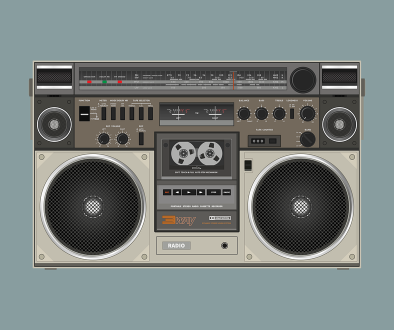Radio Circuitry
You might listen to the radio but have you ever listen to radio terms? Like when and how radio gives us so much information without giving us pictures. Radio works on frequencies, and if you don’t know the mechanism, you don’t know any of those things related to radio.
The basic operating principles of the major circuitry and active and passive components used in radio are described in this article. You will get enough description that entertains you as well as permits you to understand the applications to radio circuitry.
Radio Circuitry means the elements of radio or vacuum tubes and transistors on active devices and all these we shall discuss here
Elements Involved In Radio Circuitry:
The basic manipulating principles of the crucial circuitry and agile and acquiescent elements involved to allow the reader to understand the entreaty to radio circuitry.used in radio are elucidated in the article electronics.
Vacuum Tubes And Transistors On Active devices:
Electron Tube
An electron tube delegated agile components, functions fundamentally as an amplifier, and its output is essentially an amplified facsimile of the original input gesticulation. The uncomplicated and accessible louden electron tube is the triode, consisting of a cathode glazed with material that gives a profuse regale of electrons when heated, an open-mesh gauze permitting electrons to pass through but controlling their flow, and a plate to save the electrons.
The plate is continued at a positive voltage concerning the cathode in the way to attract the electrons; the gauze normally has a small negative voltage so that it does not save electrons but does save their flow to the plate.
The output voltage is normally greater than the input voltage to the gauze. The tube must be pumped to a high degree of vacuum, or the plate current flow is unpredictable.
Other electrodes, also in the form of open-mesh gauze, may be involved in the tube to perform some specific special functions. An example is a four-electrode tube which is known as the tetrode, in which an open-mesh gauze maintained at a positive voltage is placed between plate and control gauze.
This lessens the effect of plate voltage on electron flow and increases the louden property of the tube. The introduction of a third gauze, known as a suppressor gauze, produces the pentode, which can give even greater amplification.
The transistor, which has replaced at large scale, and the electron tube as the agile component in low-voltage electronic circuits, is made from semiconductor materials—that is, substances that are neither good conductors nor good insulators.
Two common semiconductor materials are germanium and silicon, to which bijou amounts of contamination such as indium, gallium, arsenic, or phosphorus are added to disseminate electrical charges to them. Arsenic and phosphorus, for an instant, give extra negative charges, bequeathing n-type material; indium or gallium yield a shortage of electrons or an overabundance of positive charges or holes, bequeathing p-type material.
Transistor
A transistor is a sandwich of semiconductor substances with the same degradation in the two outer layers and a different degradation in the center layer giving current carriers of opposite charge to those produced by the outer layers.
If the outer layers are loch of positively charged current carriers (p-type) and the center layer gives an overabundance of electrons (n-type), the transistor is known as a p–n–p (positive-negative–positive carriers) type. If the p and n layers have conversed, the transistor is an n–p–n-type. The two outer layers are named the emitter and collector, and the center layer is known as the base.
A transistor is an amplifier of current in the vacuum tube, in contrast, is an amplifier of voltage. The transistor makes a requisite provide of current carriers at room temperature and does not need a heated cathode as does the vacuum tube. Thus the power needed from the power dispense is much lessened, less heat is manufactured, and transistors and their circuitry can be crammed into a bijou container and takes up less space.
Transistors are also physically much bijou than comparable electron tubes. Thus the transistorized bijou radio can fit in a pocket—a distinct advantage over the cumbersome tube radio it has restored.
In its starting form, the transistor was able to amplify only relatively low frequencies because the replacement of electrons and positive charges covering the sandwich was slow. Modern techniques, however, have control this difficulty so that amplifying power to frequencies over 1,000 megahertz is commonplace.
The superheterodyne principle:
For information to be transmitted, it must be connected to a radio-frequency carrier or bearer wave, which is then transmitted in a provided frequency channel. The bearer wave and information can be picked up by a receiver tuned to this channel.
The procedure by which the information is connected to the carrier wave is modulation. Modulated carriers are covered in their separate slots or channels; if transmitters are geographically banned to each other, they must not use the same channel or overlap each other’s channels. If such overlap occurs, serious change results—two radio programs may be heard equivalently or one may form a misrepresented background to the other.
Amplifiers
Amplifiers may be classified in a number of different ways: according to bandwidth; frequency range; or output parameter.
Wide-band radio-frequency amplifiers
They are not needed for audio signals unless a frequency-modulated system is used. Amplitude-modulated signals for sound broadcasting should have a radio-frequency bandwidth of ±10 kilohertz though on medium waves it is often limited to ±5 kilohertz. High-quality frequency-modulated audio needs a bandwidth of about ±100 kilohertz.
Audio-frequency amplifiers
Present in a few design problems and negative feedback of the output into the input can overcome distortion problems.
Radio-frequency amplifiers
which can be tuned, suffer from variation of selectivity nd gain over the tuning range. Selectivity tends to broaden and gain to increase as capacitance is decreased, and instability can be troublesome at the highest tuning frequency. Intermediate-frequency amplifiers do not suffer from these defects since the tuning frequency is fixed.



